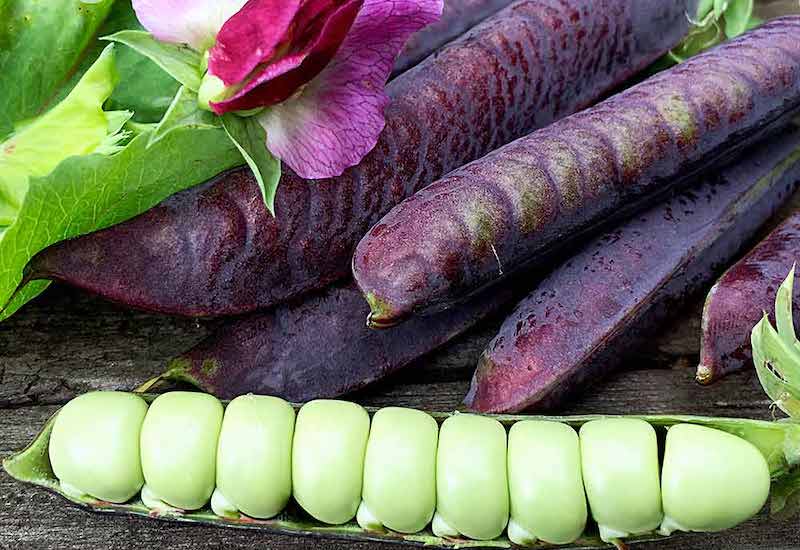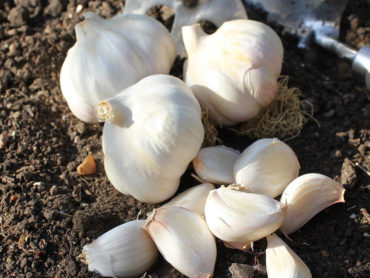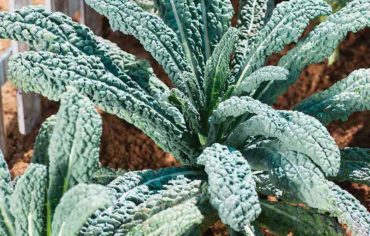Learn how to successfully sow pea seeds and get the best from your bean plants this season to enjoy sweet and crunchy harvests of edible pods and peas. Here’s everything you need to know to grow bumper crops of peas and beans from plugs or seeds, with specific, step-by-step growing advice and juicy top tips!
Why grow peas and beans?
Peas (Pisum sativum) and beans (Phaseolus sp.) are both members of the legume family (Fabaceae), and can be grown either from seeds or from plug plants.
Peas and beans are great to grow because:
- They germinate quickly and easily, usually within a week of sowing.
- They have large and easy to handle seeds, making them perfect for kids’ hands so you can get your children involved in the garden.
- They’re relatively fuss-free.
- There’s a range of varieties with enough hardiness to be able to grow them year-round.
- Every variety of pea and bean has its own merits and flavours – there’s something for everyone!
- Fresh from the pod, or in your favourite recipes, they’re delicious!
Another reason to grow these plants is because of their nitrogen fixing abilities. They ‘fix’ nitrogen into the soil, making them a fantastic rotational crop before planting hungry feeders like brassicas in an organic gardening system. They do this through a symbiotic relationship with friendly bacteria called ‘rhizobia’, which is stored in their root systems. Leave the roots in the soil after your plants have finished cropping, and they’ll release even more nitrogen as they decompose.
How to grow broad beans
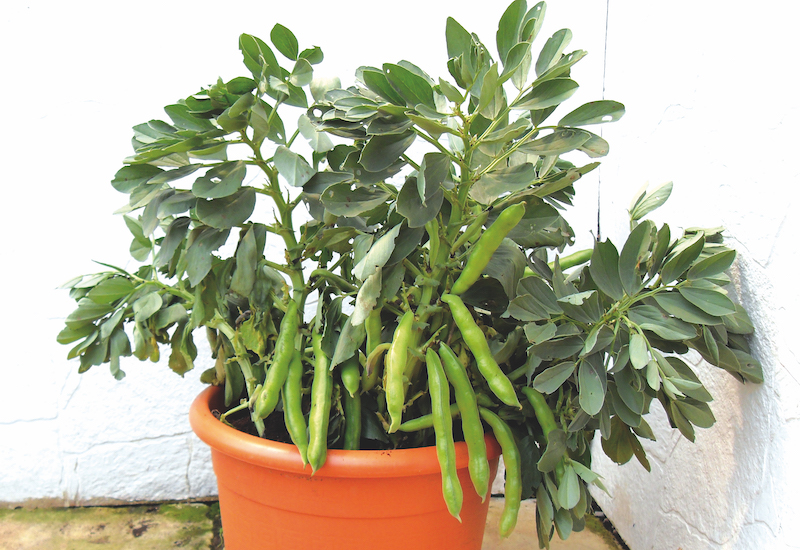
Image: Broad bean ‘Robin Hood’ from Suttons
Fresh broad beans are fairly hard to come by in the supermarkets. Also known as ‘fava’ beans, they’re absolutely delicious when lightly steamed and served with salt and butter. Because they’re hardy, broad beans are a fantastic option to fill the allotment beds during the winter months for an extra early harvest that fills the ‘hungry gap’ in April and May. Choose extra hardy variety ‘The Sutton’ to sow from November or buy garden ready plug plants ‘Aquadulce Claudia’ for planting outdoors during the winter.
Sow and grow your broad bean seeds following these steps:
- Sow your seeds in modular trays filled with damp seed compost, undercover, making sure they’re well covered with soil.
- Plant out or pot on seedlings when they have around four to five true leaves.
- …or sow hardy seeds directly outdoors, 5cm deep, in rows 30cm apart at any time during the year.
- Cover outdoor sown broad beans with netting or a tunnel cloche to prevent birds digging up the seedlings as they emerge.
- Pinch out the growing tips of plants when the lowest flowers start developing immature pods.
- Pick your pods when you can see the beans inside reach a good size. Harvest pods regularly to encourage further production.
Broad beans top tip:
- Deter blackfly, and encourage further pods to set by pinching out growing tips after the first pods emerge.
How to grow runner beans

Image: Runner bean ‘Super Trio Collection’ from Suttons
Runner beans are an allotment classic. Structural plants that grow up to 3m tall, dwarf varieties are available if you love the taste but don’t have the growing space. Try growing ‘Hestia’ (a dwarf variety that produces long straight pods with great flavour) in a container on the patio. Sow your runner beans indoors in April, as they’re not frost hardy.
Sow and grow your runner bean seeds following these steps:
- Sow your bean seeds individually in a root training propagator to get the root systems off to a great start. Alternatively, use cleaned yoghurt pots or the inner tubes of toilet rolls.
- Plant your beans outside after the risk of frost has passed, and when they have four or five true leaves. Remember to harden them off for a week or two before permanently moving them outside.
- Provide a tall support for your runner beans from the moment you plant them outdoors. A trellis or teepee of bamboo canes is perfect, or string up some biodegradable netting.
- Pick your runner beans regularly, these beans are heavy croppers! Regular picking will keep your plant producing more flowers and pods.
Runner beans top tip
- Feed your soil with compost a couple of weeks before sowing to ensure your beans have the best nutrition while they grow.
How to grow French beans
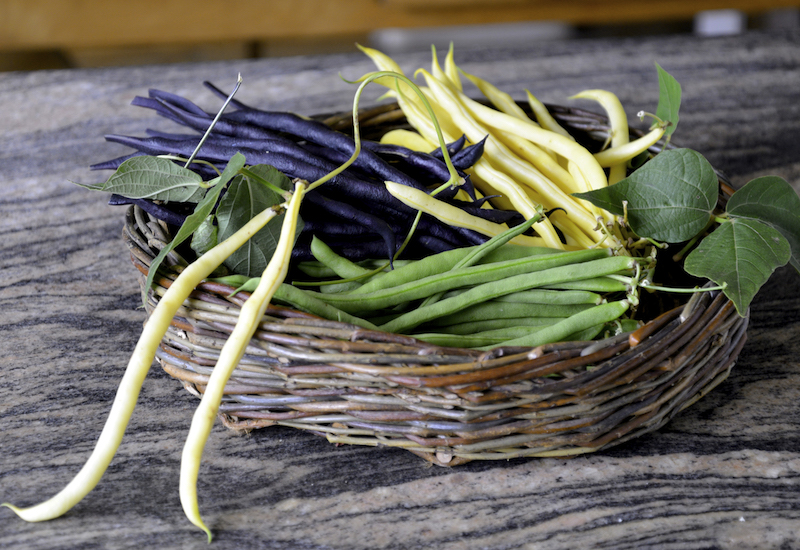
Image: French Bean ‘Colourful Climbing Mix’ from Suttons
French beans are compact enough to grow in containers and smaller spaces. They’re crunchy and delicious, making a great raw snack or lovely steamed side dish. These beans are available in a range of colours including green, cream, yellow and purple.
Sow and grow your French bean seeds using these pointers:
- Sow your beans indoors in April. Use modular seed trays and good quality seed compost.
- Harden off your plantlets for a week or two before transferring outside permanently.
- Plant out your beans into the garden after all frosts are over, either into a well dug bed or into medium sized containers.
- Alternatively, you can sow your bean seeds directly outside into the ground in their final positions once temperatures are well above freezing.
- Plant your plants 15cm apart in thick rows or blocks.
- Provide support if you’re growing climbing French bean varieties.
- Harvest as soon as the bean pods are long enough, and keep regularly harvesting
to promote the formation of more pods.
French beans top tip
- Sow your varieties successionally every few weeks – this prolongs the naturally short harvest period.
How to grow peas
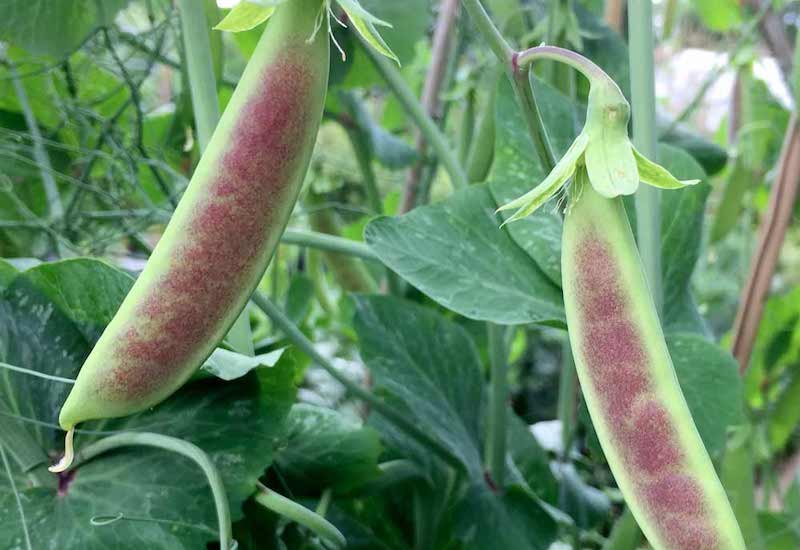
Image: Pea ‘Spring Blush’ from Suttons
Peas are so versatile! Shelling varieties produce large individual peas for steaming, whereas sugar snap and mangetout are delicious eaten whole — they’re all tasty raw so make sure you grow enough plants to ensure at least some of your harvest reaches the kitchen before being munched! You can even grow purple coloured pods for something a bit different.
Hardy varieties like ‘Douce Provence’, can be sown in October, November or December. Overwinter the seedlings in a cold frame outdoors and plant out in early spring for an extra early crop.
Pea varieties are roughly split into first early, second early and maincrop. First earlies tend to be a bit hardier and quicker to crop, so sow them very early in the year. Maincrop types are the last to sow, and this is best done at the beginning of summer. Check out our article: best expert advice on growing peas for more helpful pointers.
Sow and grow pea seeds following these steps:
- Sow your seeds into a root training propagator using seed compost to encourage your plants to develop long and strong roots.
- Sow your early varieties as early as January or February undercover.
- Provide support for your pea plants using canes, string or ‘pea sticks’. They climb with tiny tendrils so prefer slimmer climbing frames.
- Plant them out at the base of your support structure around 10cm apart.
Don’t forget that pea shoots are another tasty crop to harvest from your plants. Either sow your pea seeds specifically for this purpose and cut them all when the seedlings reach a few inches tall, or nip a growing tip here and there from your maincrop plants.
Peas top tip
- Spend some time planning which varieties best suit your soil type and the time of year you’re planting them.
More quick tips for growing peas and beans
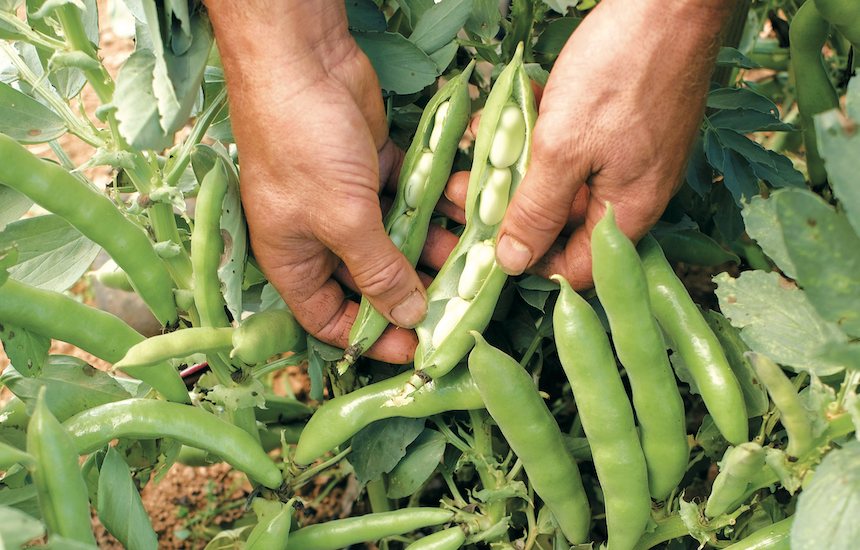
Image: Broad bean ‘The Sutton’ from Suttons
Follow these basic principles when growing your pea and bean plants:
- Mulch around the base of your plants to trap moisture into the soil and prevent it drying out during warm weather.
- Water your plants regularly in the summer. This keeps the plants healthy and cropping well.
- Hoe between your plants to reduce weed competition for nutrients and water.
- Tie in your climbing varieties if they need it to prevent any stem breakages or damage in windy weather.
- Harvest pods regularly to keep your plants cropping well during the season.
We hope we’ve given you plenty of information to help you grow your own bumper crops of peas and beans this year. These vegetable plants are a true allotment classic and are well worth growing for flavour and enjoyment. Share your harvests with us via Instagram or Twitter, we love to hear from you!
Lead Image: Pea Plants – Blauwschokker from Suttons
Last Updated on December 11, 2024 by Suttons Horticultural Team

